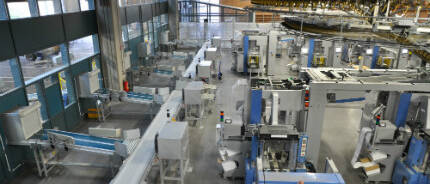In a non-continuous transport facility, the control system decides immediately whether a transport object can be transported from one location to another. In the first step, this depends solely on the physical occupancy of the facility (occupancy status of the next conveyor). Only if transport is possible is it necessary to check whether the transport object may be transported and, if so, in which direction.
The transport direction determination (here, the instruction to stop is also a possible desired result) must be able to handle different objects. On the one hand, transport objects that have a transport order and thus a decision rule for the decision point, and on the other hand, UFOs and stowaways. Therefore, instructions must also be stored on how to handle the latter transport objects. If necessary, these can also be used for transport objects with a travel order but without a specific instruction for the current point.
This decision-making process places high demands on the real-time capability of a facility. Its architecture determines its flexibility and ability to adapt to the changing needs of operational business – both positive and negative.
For more information, see UFOs and fare dodgers.
Image source: © Industrieblick – Fotolia.com
